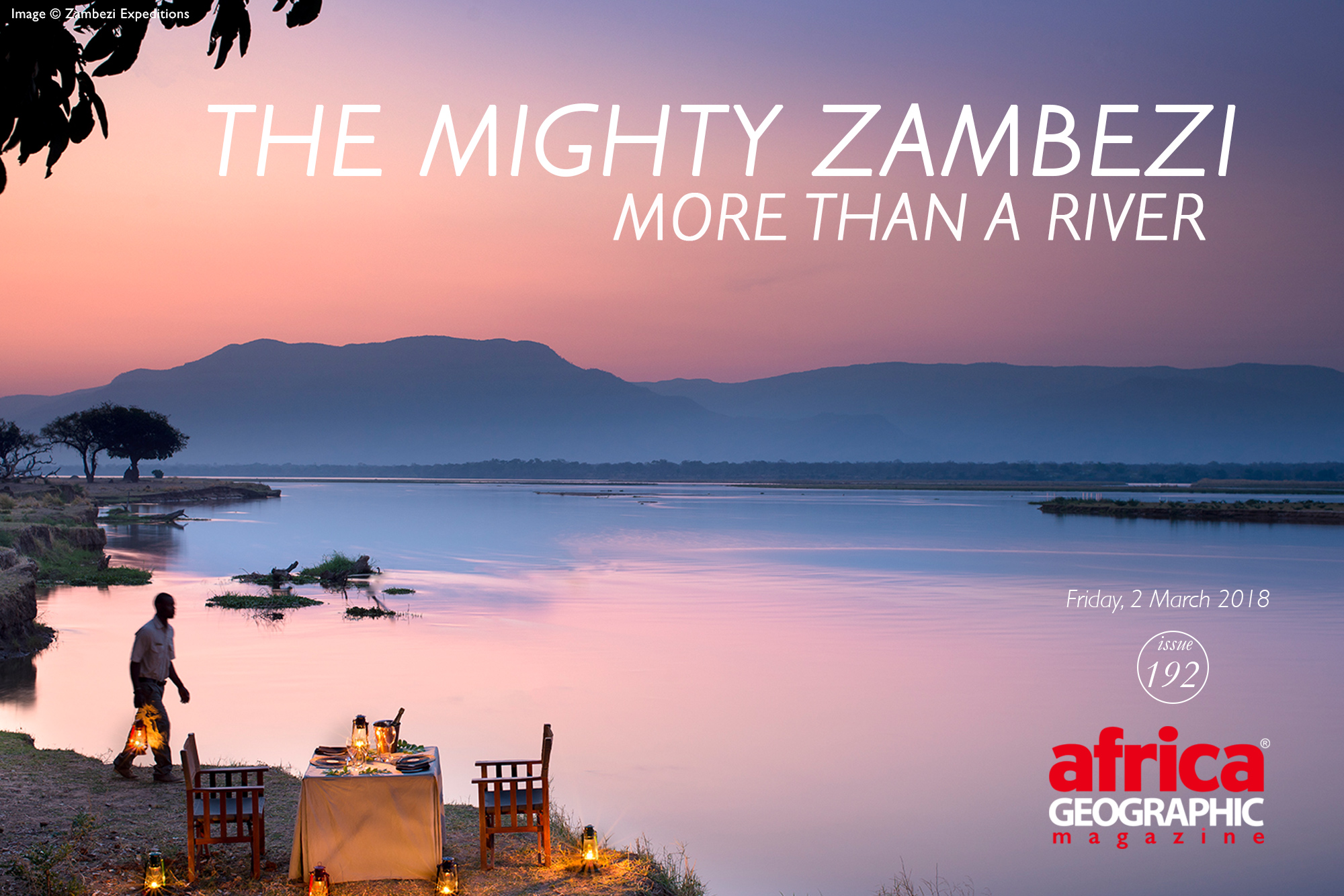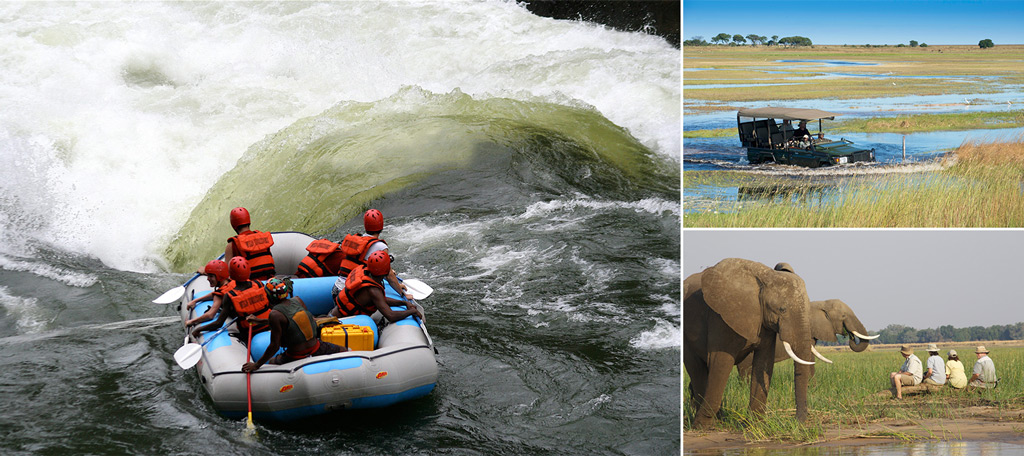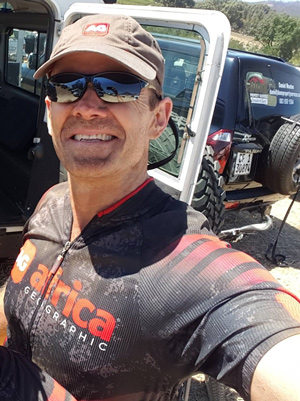
The Zambezi River: Source to mouth

She goes from lazy and beguiling to a raging beast capable of pounding a man and his ambitions into submission. Indeed, the Zambezi River is quite a lady…
Most people know the Zambezi as that intoxicating cauldron of the elements and humankind at Victoria Falls – where that massive river inhales and forces itself into a few narrow channels, before plunging a hundred hurly-burly metres onto the rocks below. Mosi-oa-Tunya – ‘the smoke that thunders’. That heady, somewhat eclectic, mix of 5-star luxury safari and backpacker basics, of gentle sunset cruises and bruising white-water rafting …

The life force of southern Africa
But the Zambezi is more than that – far more than that. It is the lifeblood of southern Africa, providing drinking water, food, irrigation, transport, tourism services and more. Many significant, east-flowing rivers in the region marry into the Zambezi kingdom before completing their quest to reach the Indian Ocean. Yes, the Zambezi gobbles up the likes of the Chobe, Kafue and Luangwa rivers on her way to complete dominance.
I am one of the privileged few who have charted her waters from source to sea, an experience that will forever remain etched in my memory.

The 2,574km-long Zambezi River has a 1,390,000 km2 catchment area, making her the fourth-largest river in Africa, after the Nile, Congo and Niger rivers.
She goes through three phases in her journey from source to mouth, and visits six countries – Zambia, Angola, Namibia, Botswana, Zimbabwe and Mozambique. First, she is a vast floodplain in remote western Zambia, and then a river as we know it as she squeezes between five countries, and finally a delta at journey’s end in Mozambique – the Indian Ocean. Of course, man has tried to tame her wild ways along the way, and the dams Kariba and Cahora Bassa, both of which generate hydro-electricity for the region, create brief moments for pause in her journey. Kariba Dam holds back the world’s largest man-made lake, at 226km long and up to 40km wide in places; and 86 men lost their lives before construction was completed in 1977.
A travellers’ paradise
Along the way, the Zambezi offers a multitude of experiences for travellers. If you scan the famous names below, you will cover most of southern Africa’s top safari destinations!
If you seek isolation and zero infrastructure, then Barotseland, Liuwa Plain and Sioma Ngwezi in western Zambia are the ticket. Look out for the annual wildebeest migration in Liuwa Plain, but be warned that this entire area is not to be taken on unless you are well prepared, or with an experienced operator.
Much of this area becomes a vast mass of water during the wet summer season, with people, livestock and wild animals fleeing to higher ground. The famous Ku-omboka is a ceremonial enactment of this annual pilgrimage as the Lozi chief leads his people to dry ground. Dry land could, of course, be a small mound surrounded by rising water – as a few trillion ratty ants and I found out one evening during my sojourn from source to mouth…

If you seek more traditional safari experiences then the stretch of the river forming Zambia’s international border with Namibia, Botswana, Zimbabwe and Mozambique are where you should head. Isolation is still the keyword in much of this section, but of course, areas near Victoria Falls are very accessible. Famous names like the Caprivi Strip, Chobe National Park, Lake Kariba, Mana Pools and Lower Zambezi National Park provide legendary wildlife encounters. And then, of course, there is Victoria Falls.
If you enjoy the relaxed coastal life, then head for the mouth of the Zambezi. The river spreads out into a myriad of mangrove-infested channels before meeting the Indian Ocean in a heaving display. But be warned that the mouth of the river is almost 100 kilometres wide, with tidal swings of four metres, and you will undoubtedly get lost if you head into the mangroves without an experienced local guide. Even GPS co-ordinates are not a guarantee for not getting lost, as my fellow adventurers and I found out…

The Zambezi is a lady for all seasons. Birding is generally better during the hot and wet summer months (October to March), whereas game viewing is best during the cool, dry winter months and cusp seasons (April to October). White-water rafting at Victoria Falls is available all year round but sometimes postponed if the conditions are considered too dangerous.
You could spend your lifetime exploring the Zambezi and surrounds. You can do this in supreme comfort or rustic simplicity, and anything in-between. Whether your interest lies in big game or bird watching, bushwalking, water sports or any of a myriad of activities, and whether your style is hammock or high-adrenaline, the Zambezi is the place to go. Short excursions from the river get you to northern Botswana’s predators, Kafue’s diversity, Liuwa’s migrations and much more. There are remote river lodges where you will not see another soul for weeks, and hotels are brimming with activity. Such is the diversity of the Zambezi.![]()
ABOUT THE AUTHOR
 Simon Espley is an African of the digital tribe, a chartered accountant and CEO of Africa Geographic. His travels in Africa are in search of wilderness, real people with interesting stories and elusive birds. He lives in Hoedspruit with his wife Lizz and two Jack Russells, and when not travelling or working, he will be on his mountain bike somewhere out there. His motto is ‘Live for now, have fun, be good, tread lightly and respect others. And embrace change.’
Simon Espley is an African of the digital tribe, a chartered accountant and CEO of Africa Geographic. His travels in Africa are in search of wilderness, real people with interesting stories and elusive birds. He lives in Hoedspruit with his wife Lizz and two Jack Russells, and when not travelling or working, he will be on his mountain bike somewhere out there. His motto is ‘Live for now, have fun, be good, tread lightly and respect others. And embrace change.’
To comment on this story: Login (or sign up) to our app here - it's a troll-free safe place 🙂.![]()




